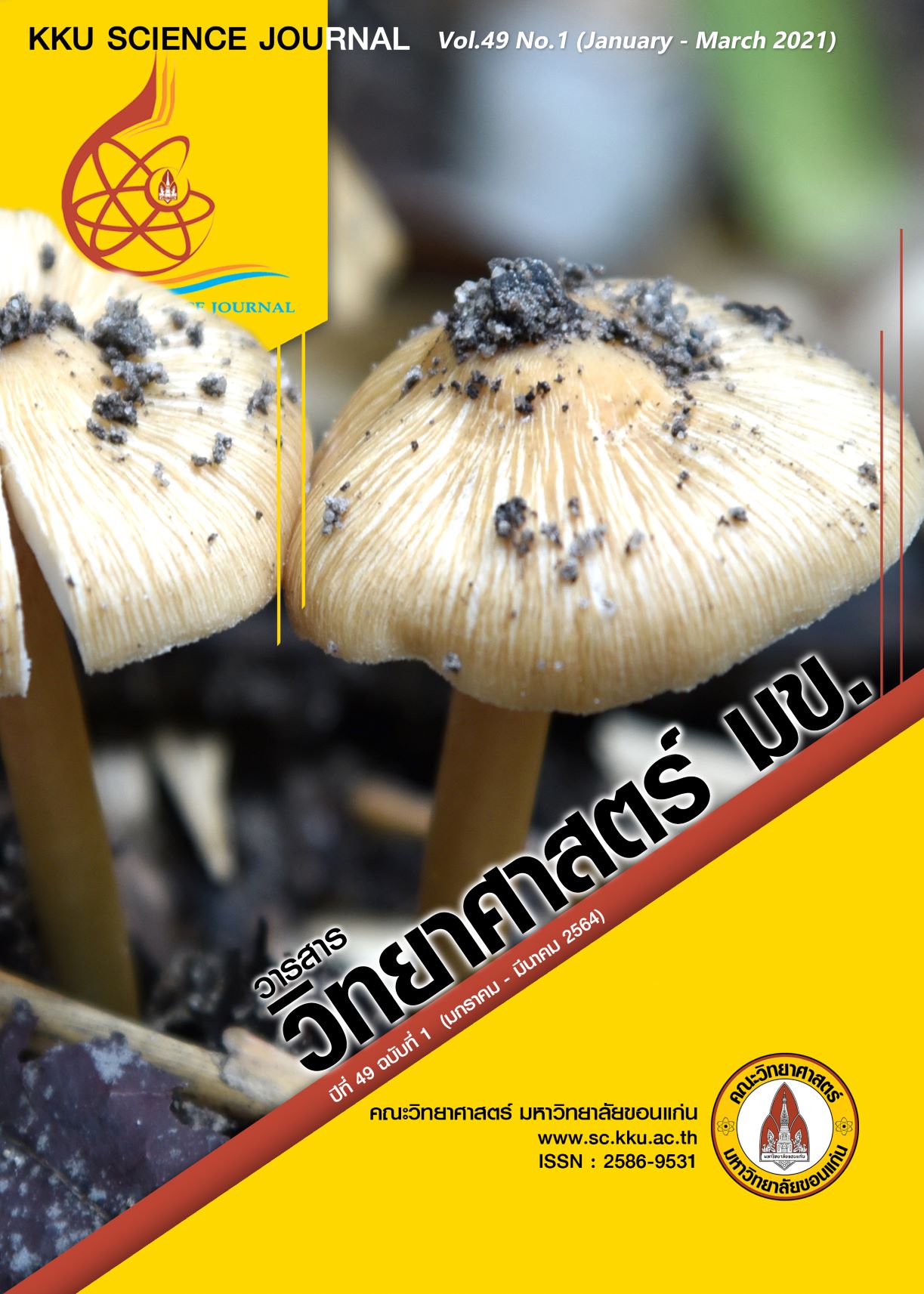Utilization of Coconut Fiber in Stone Mastic Asphalt Mixtures
Main Article Content
Abstract
In this study, coconut fiber of 5-20 mm-long with various contents of 0, 0.1, 0.3, and 0.5% incorporated with AC60/70 and 12.5 mm NMAS were used to prepare mixtures for SMA. Properties of mixture including volumetric properties, Marshall Stability, draindown, and TSR were determined and investigated. The results revealed that mixture containing 0.3% of 5-20 mm-long coconut fiber yielded to the optimum requirements. With this coconut fiber content, there was a significant improvement of properties with higher Marshall Stability by 10.52% and lower draindown by 55.35% compared to mixture containing 0% coconut fiber. Moreover, 0.3% of coconut fiber provides the highest. The finding of this study may offer the alternative choices for local authority to have more materials to consider for pavements construction.
Article Details

This work is licensed under a Creative Commons Attribution-NonCommercial-NoDerivatives 4.0 International License.
References
Awanti, S., Habal, A., Hiremath, P., Tadibidi, S. and Hallale, S. (2012). Characterization of stone matrix asphalt with cellulose and coconut fiber. Advances in Civil Engineering and Building Materials. pp 639-642.
ASTM D4867. (2014). Standard test method for effect of moisture on asphalt concrete paving mixtures ASTM International, West Conshohocken, PA.
ASTM D6390-11. (2017). Standard test method for determination of draindown characteristics in uncompacted asphalt mixtures ASTM International, West Conshohocken, PA.
ASTM D6926-20. (2020). Standard practice for preparation of asphalt mixture specimens using marshall apparatus ASTM International, West Conshohocken, PA.
ASTM D6927-15. (2015). Standard test method for marshall stability and flow of bituminous mixtures ASTM International, West Conshohocken, PA.
ASTM D6931-17. (2017). Standard test method for indirect tensile (IDT) strength of bituminous mixtures ASTM International, West Conshohocken, PA.
Beena, B. K. and Bindu, C. S. (2011). Coir fibre as a stabilizing additive in stone mastic asphalt. International Journal of Earth Sciences and Engineering 4(1): 165-177
Bindu, C. S. and Beena, K. S. (2010). Waste plastic as a stabilizing additive in Stone Mastic Asphalt. International Journal of Engineering and Technology 2(6): 379-387.
Brown, E. and Cooley, L. (1999). Designing stone matrix asphalt mixtures for rut-resistance pavement, NCHRP report 425 Transportation research board, National research council, Washington, DC, USA.
Candy, C. and Charoentham, N. (2020). Study of using coconut fiber in Stone Mastic Asphalt. Proceeding of the 3rd Conference on Innovation Engineering and Technology for Economy and Society. Kasem Bundit University Romklao Campus, Bangkok, Thailand. pp 483-487.
Cao, W., Liu, S., and Feng, Z. (2013). Comparison of performance of stone matrix asphalt mixtures using basalt and limestone aggregates. Construction and Building Materials 41: 474–479.
Charoentham, N. and Ngamdee, P. (2019). Using HDPE and PET recycled plastic for Stone Mastic Asphalt pavement. Proceeding of International Conference of Hong Kong Society for Transportaion Studies. Hong Kong.
Hainin R., Reshi, W. F., Niroumand, H. (2012) The importance of stone mastic asphalt in construction. Electronic. Journal of Geotechnical Engineering 17: 49-74.
Hassan, H. F., Al-Oraimi, S., and Taha, R. (2005). Evaluation of Open-Graded Friction Course Mixtures Containing Cellulose Fibers and Styrene Butadiene Rubber Polymer. Journal of Materials in Civil Engineering 17(4): 416-422.
Jitsangiam, P., Chindaprasirt, P., and Nikraz, H. (2013). An evaluation of the suitability of SUPERPAVE and Marshall asphalt mix designs as they relate to Thailand’s climatic conditions Construction and Building Materials. Construction and Building Materials 40: 961-970.
Jones, D., Harvey, J., Al-Qadi, I. L., and Mateos, A. (2012). Advances in pavement design through full-scale accelerated pavement testing. CRC Press.
Kriech, A. J., Schreiner, C. A., Osborn, L. V. and Riley, A. J. (2018). Assessing cancer hazards of bitumen emissions – a case study for complex petroleum substances. Critical Reviews in Toxicology 48(2): 121-142.
Kumar, N. L. N. and Ravitheja, A. (2019). Characteristics of stone matrix asphalt by using natural fibers as additives Materials today: proceedings 19: 397-402
Mashaan, N. S., Ali, H. A., Koting, S., and Karim, M. R. (2013). Performance Evaluation of Crumb Rubber Modified StoneMastic Asphalt Pavement in Malaysia. Advances in Materials Science and Engineering 2013: 1-8.
National Academies of Sciences, Engineering, and Medicine. (2015). Fiber Additives in Asphalt Mixtures. Washington DC: The National Academies Press.
National Asphalt Pavement Association. (2002). Designing and Constructing SMA Mixtures: State of the Practice Lanham, Maryland. Quality Improvement Series: 57.
Panda, M., Suchismita, A., and Giri, J. (2013). Utilization of Ripe Coconut Fiber in Stone Matrix Asphalt Mixes. International Journal of Transportation Science and Technology 2(4): 289-302.
Siswanto, H. (2017). The Effect of Latex on Permanent Deformation of Asphalt Concrete Wearing Course. Procedia Engineering 171: 1390-1394.
Shravan, K. and Reddy, K. P. (2017). A Comparative Study on Performance of Stone Matrix Asphalt with Cellulose and Coir Fiber. International Journal of Advance Research and Innovative Ideas in Education 3(6): 795-804.
Tayfur, S., Ozen, H. and Aksoy, A. (2007). Investigation of rutting performance of asphalt mixtures containing polymer modifiers. Construction and Building Materials 21(2): 328-337.
Vale, A., Casagrande, M. and Soares, J. (2014). Behavior of Natural Fiber in Stone Matrix Asphalt Mixtures Using Two Design Methods. Journal of Materials in Civil Engineering 26(3): 457-465.


